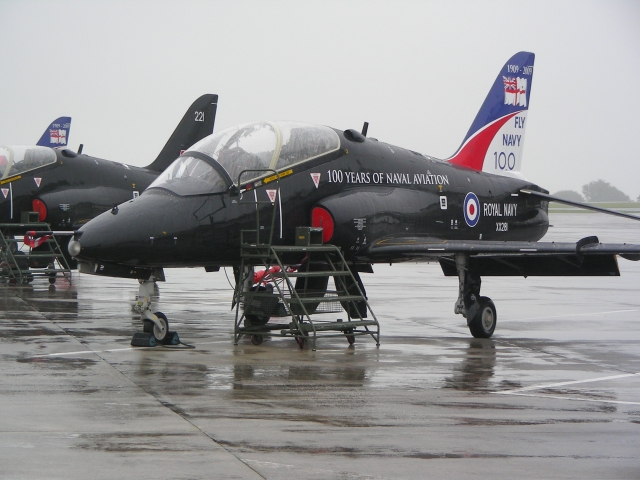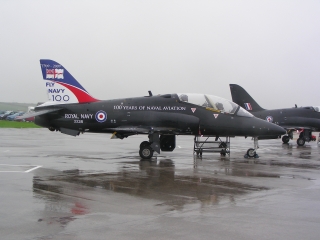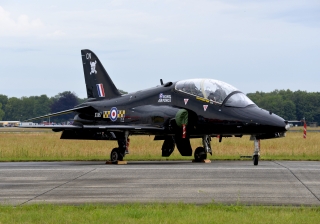
On 1 October 2021, 100 squadron Pirates of the Royal Air Force will take over the maritime support role from Fleet Air Arm unit 736NAS. Sadly, this is a direct result of 736NAS being disbanded a day earlier at RNAS Culdrose.
The history of 736NAS dates back to 24 May 1943. On this date it was activated as a naval training squadron at RNAS Yeovilton. Of time the squadron was equipped with various piston-engined aircraft like the Seafire, Sea Fury and Firefly. This came to an end in 1952 when the unit was de-activated, only to be reactivated again the next year as Advanced Jet Flying School at RNAS Lossiemouth. This time, the squadron was equipped with Sea Vampires and Sea Hawks which were later replaced by the Scimitar. On 26 March 1965 the unit was disbanded once again.
The introduction of the Buccaneer into service with the Fleet Air Arm resulted in 736NAS being re-actived once again in 1966. Trials unit 700B squadron was reformed into 736NAS and equipped with the Buccaneer S1 and S2 responsible for conversion training on this type. The British labour government decided to axe the Royal Navy carrier fleet during the early 1970s, and the remaining Buccaneer S2 aircraft were transfered to the Royal Air Force. Initially, 736NAS was involved in RAF aircrew training, but once this service established its own conversion unit, 237OCU, it became obsolete and was once again disbanded in 1972.
When the Fleet Requirements and Air Direction Unit (FRADU) was disbanded in 2013, 736NAS took on its associated airframes and taskings from that point on. Equipped with the Hawk T1, the squadron acts as adversary training partner to the Royal Navy fleet. The Hawk jets are used to simulate air attack on British and NATO vessels during training exercises. The squadron also supports the Royal Navy School of Fighter Control in air-to-air combat training sequences. In total about 1,790 flying hours per year are logged by 736NAS.

After the war, the unit was downgraded to so-called cadre level until it moved to RAF Baldonnel (Ireland) to be brought back to full strength again in September 1919. Still a bomber squadron, the unit also provided close air support to ground forces and was deployed to Seletar (Singapore) in 1932. By this time the squadron was equipped with Vickers Vildebeest biplanes. These aircraft were no match against the modern Japanese aircraft when the Second World War also broke out in Asia. The squadron was decimated while attempting to attack Japanese shipping.
At RAF Grimsby, 100 squadron was re-activated under Group 1, RAF Bomber Command on 15 December 1942. Equipped with the famous Avro Lancaster, the unit conducted bombing raids accross occupied Europe and Germany until the end of the war. Also after the war, the squadron continued to use Lancasters until these were replaced by the more modern Lincoln bombers in 1946. By this time, RAF Hemswell was the home of the unit until it was deployed to the Malayan emergency. The jet age started for 100 squadron in April 1954 when the unit received its first English Electric Canberra bomber. At the same time the unit moved to RAF Wittering where it would be disbanded on 1 September 1959.
At the same RAF station, the squadron would be re-activated again on 1 May 1962. This time Victor B2 bombers were delivered, which were used in the nuclear deterrent role as of 1964. This lasted four years, until the squadron was again de-activated in 1968.
On 1 February 1972, 100 squadron would be re-activated as a so-called targets facility unit. As such it acted as training targets for RAF air defence units, both for air intercept training and for ground based air defence units. For a long time, modified Canberra bombers were used for this purpose. In 1982, the unit moved to RAF Wyton. In 1991, the Canberras were retired and Hawk T1 aircraft were delivered to the squadron. For a short while (1994-1996) the squadron flew out of RAF Finningley before moving to its current home at RAF Leeming.
The nickname of the squadron is "Pirates", which is a reference to a flag with skull and crossbones which was taken from a brothel in France by members of the squadron in 1918. It became the squadron token, and the phrase "Blood and Bones" was added to it. The original flag was carried by one of the squadrons pilots when he became a Japanese Prisoner of War. In that period the flag disintegrated. The 100 squadron aircraft are still adorned with skull and crossbones as unit markings.
 The role of the squadron has not really changed, except that with the introduction of the Hawk the squadron also took on the so-called Red Air (aggressor) role for air-to-air combat training and close air support training for ground units. The unit is still equipped with the Hawk T1A, which is slated to be replaced by a civil contractor fast jet fleet in 2027. These plans have been abandoned, but it is not yet clear if the Hawk T1A will serve beyond 2027 or if they will be replaced by a new type. Currently about twenty Hawk jets are assigned to the squadron. Most likely most Hawks operated by 736NAS will transfer to 100 squadron to increase the number of aircraft available for executing its current role and to take on the one from 736NAS.
The role of the squadron has not really changed, except that with the introduction of the Hawk the squadron also took on the so-called Red Air (aggressor) role for air-to-air combat training and close air support training for ground units. The unit is still equipped with the Hawk T1A, which is slated to be replaced by a civil contractor fast jet fleet in 2027. These plans have been abandoned, but it is not yet clear if the Hawk T1A will serve beyond 2027 or if they will be replaced by a new type. Currently about twenty Hawk jets are assigned to the squadron. Most likely most Hawks operated by 736NAS will transfer to 100 squadron to increase the number of aircraft available for executing its current role and to take on the one from 736NAS.
Photos: Erik Jan Engelen


